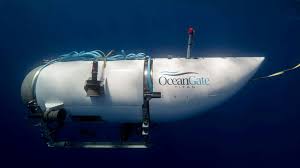When touched by the allure of exploration, the human spirit becomes an insatiable force. This flame drives pioneers like Stockton Rush, CEO of OceanGate, to explore new depths, charting the course for a new era of deep-sea exploration.
Like the explorers of old, Rush stood at the edge of the abyss, eager to uncover what lies beneath the ocean’s surface. However, the tragic implosion of the Titan, OceanGate’s flagship submersible, and the loss of those on board have reignited the debate on innovation versus regulation. This incident highlights the necessity for a delicate balance between daring innovation and stringent safety measures in the burgeoning field of deep-sea tourism.
Rush epitomized the audacious innovator. A visionary and a mastermind engineer, he viewed traditional safety regulations as barriers preventing him from plunging into the vastness of the uncharted ocean. His audacity, fueled by his lineage of two signatories of the Declaration of Independence and a rich background in business and philanthropy, lent credibility to his bold endeavors. However, this same audacious spirit led to questionable decisions, such as neglecting to certify the Titan with regulatory bodies like Det Norske. This highlights the tension between permissionless innovation and safety regulations in high-risk areas like deep-sea exploration.
The Titan tragedy is a stark reminder of the risks inherent in deep-sea exploration and a catalyst to reflect and recalibrate our approach to innovation versus regulation. There is an inherent tension between the boundary-pushing audacity of innovation and the necessary regulation constraints. While innovators view regulations as an impediment, it is essential to recognize that regulations serve as a safeguard, mitigating risks and protecting both explorers and the environment.
Companies like OceanGate, at the forefront of innovation, must prioritize safety. This commitment can serve as the springboard for innovative safety solutions. For example, leveraging artificial intelligence to develop predictive safety algorithms to anticipate and prevent potential malfunctions. Collaboration with technology startups can develop cutting-edge safety solutions. A case in point is the partnership between mining company Rio Tinto and artificial intelligence startup Uptake to predict and prevent maintenance issues in their heavy machinery, which could inspire similar collaborations in deep-sea tourism.
An international consortium comprising industry pioneers, policymakers and technical experts can cultivate a global safety culture for risky, innovative projects. This group could establish safety and environmental protocols for deep-sea exploration. To incentivize innovation, the consortium could establish an annual deep-sea safety innovation award, recognizing and rewarding groundbreaking advancements in safety technology.
While exploration is exhilarating, it should never compromise safety. This can motivate operators to design innovative safety training programs, incorporating virtual reality and augmented reality technologies for an immersive training experience. This allows tourists to navigate potential hazards and rehearse emergency protocols virtually, setting an industry standard for safety training.
It is imperative to affirm that the need for a symbiotic relationship between innovation and safety is vital for the sustainable growth of the deep-sea tourism industry. As we plunge into the uncharted depths of our planet’s oceans, our commitment to safety, underpinned by restless innovation, must remain unwavering. In honoring pioneers like Rush, we must also safeguard future adventurers. The legacy of humanity’s underwater exploration depends on our ability to harmonize these critical elements.



